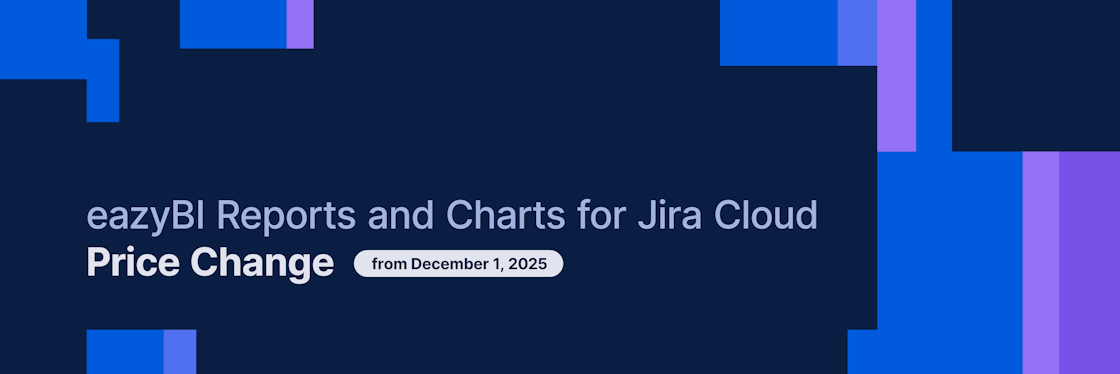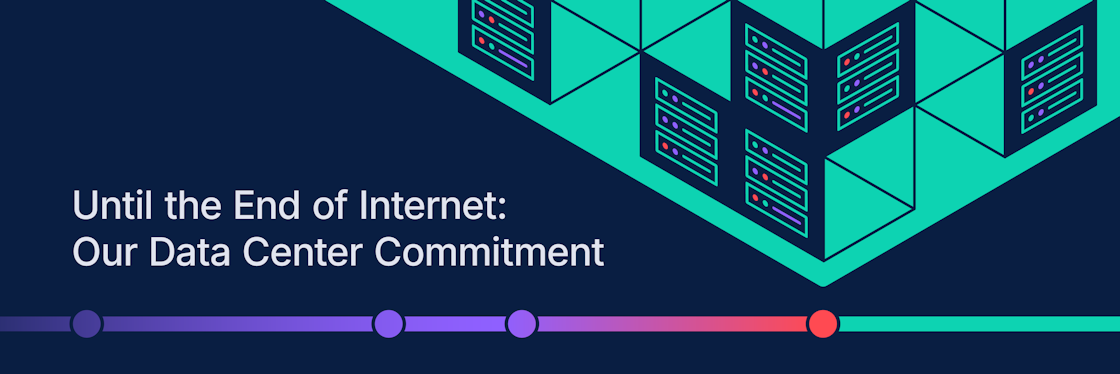

A Different Startup Story
eazyBI has never been a typical startup. We do not have a venture capital, we do not have a large team, we do not focus on high growth, and we don’t even have an office. So, how did we manage to build a company from $0 to $1 million in less than five years?
I started the company alone from scratch, almost six years ago. At that time, I already had more than 15 years of experience in the information technology (IT) service business and was working as a CTO in one of the largest IT companies in Latvia. Yet, for some reason, I felt that this was not what I wanted. I was getting bored of the daily routine at this large corporation. Secretly I dreamed about creating my own company.
Being a 38-year-old guy with a family of five and a house, I didn’t exactly match a typical startup entrepreneur profile. On the other hand:
- I had enough savings to live on for at least a year without making additional income;
- I had no mortgage on my house;
- I had no other obligations besides my family; and
- I was certain that I would still be valuable as an employee in the IT industry if this entrepreneurial journey didn’t go so well.
I just had to try!
Inspiration and Motivation
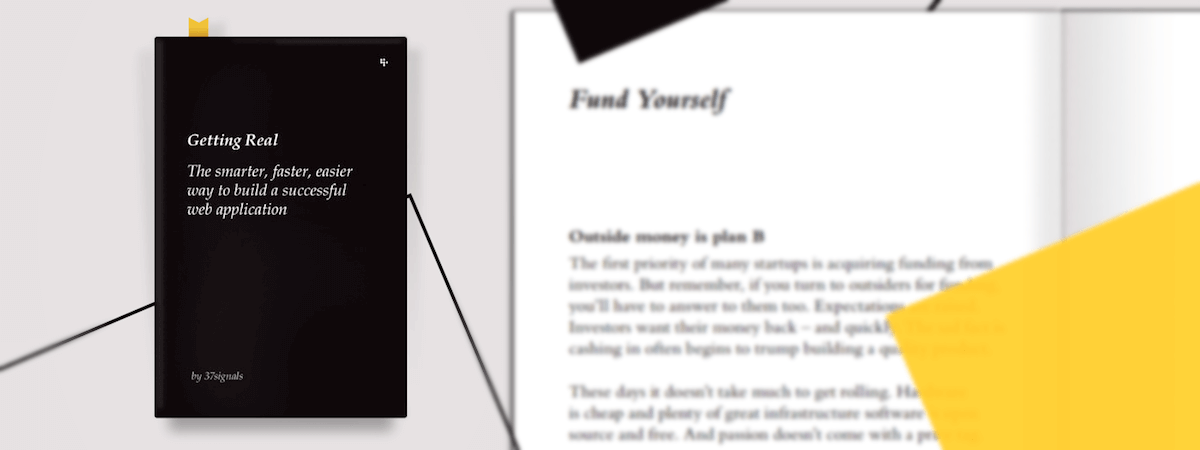
I’ve read many inspiring books about business, but there are a few that were life-changing for me. Reading those books changed my perspective about business. My inspiration and motivation to start my own company came from reading 37signals (now Basecamp) describe their approach to business, design, development, marketing, and life.
37signals used their unconventional “getting real” process to launch five successful web-based applications – Basecamp, Campfire, Backpack, Writeboard, and Ta-Da List – in just two years with a team of only seven people. They did that with no funding and no debt.
In that time they also created over a million web applications and websites.
When building eazyBI, I borrowed a perspective and many ideas from those two books. These are the lessons I’ve learned.
How to Pick the Right Idea

Obviously, the very first thing to do is to think about the idea. This is one of the most important decisions you have to make before you start doing anything else. While making this decision, you have to think about several fundamental questions:
- What do you know and do best? What do you know and do better than most others? You should not think about the latest trends or what’s hot and popular right now. Instead, think about your main competitive advantage. What is your differentiator? It could be a special skill or a unique set of personality traits.
- What do you love to do and wouldn’t mind doing for a long time? Businesses are not built overnight. It will take months, even years, before you catch momentum. There is no way of knowing whether or not you’ll be successful. It’s better to do something that you’d love to do anyway, so that when you look back after a couple of years, you won’t regret the time you spent.
- Is there a real need for this? Have you seen those silly infomercials selling a solution for a nonexistent problem? If people have urgent problems they want to solve, they are most likely already looking for a solution. You can do a quick search to find out if people talk or complain about a certain issue, ask questions, and suggest solutions.
- Are people willing to pay for a solution? If there is a quick, simple, and free solution already out there, and if there are no paid products, that’s a big red flag. Competition is good. Your competitors will mark the areas where the money is, and show you what the market is looking for, before you begin.
- Is this niche business too small or too big? If you can acquire only a few dozen customers and sell them once, there is no business. On the other hand, if the niche is large enough that huge corporations are already fighting and competing in it, be careful. Those big companies can out-compete, out-develop, and out-market you, or even offer a free product or service alternative that would eventually kill your business.
When picking an idea for my business, I thought about all these questions carefully.
In my previous career, I was working with many business intelligence (BI) tools from different vendors, so I knew this niche quite well. I knew that there was a business need and paying customers who would pay for these tools.
There were many BI tools out there, but most of them required a team of IT specialists to integrate data sources, create reports, and provide results. It took a lot of time to implement those solutions and the total cost was often outside the reach for many businesses.
There was a need for an affordable, easy-to-set-up, and easy-to-use BI tool which would not compete with those big vendor tools that I’ve used previously.
I already had a great experience in software development, a good understanding of BI concepts, I knew the market quite well, and I knew I’d love creating this new solution. It seemed almost like an obvious choice.
The outcome was eazyBI – a ready-to-use web-based BI tool supporting a one-click data import from many popular applications, an easy-to-use drag-and-drop interface for report and dashboard creation, many different chart types, powerful custom calculations, and many advanced features.

Start Small; Stay Small

More than a decade ago, I worked in a small IT services company. This company started out with 30 people and quickly grew to more than 300 people. Right after that, this company was acquired by a large corporation with more than 15,000 people. I was participating in management meetings throughout all these growth stages.
When we met at those management meetings, we often remembered and discussed the “good old days” when we were a small team. We sat ruminating about how easy it was to make decisions and solve problems back then, just because we were all able to work together.
I hear these stories often. Then why, if it was so good, should we spoil it and grow to a state where we’re not happy anymore? Is bigger better?
New businesses first need to find a profitable niche and a working business model. They have to experiment and make decisions quickly. Starting small and staying small has many benefits:
- When you’re just starting out, your success often depends on how long you can last with low-to-none income. When you’re small, you can keep your expenses low. You don’t even need an office; you can work from your home, garage, or a nearby coffee shop.
- While you’re still trying to find your niche, you can be much more flexible and resilient with a small couple-person team. You can make quick decisions, experiment faster, and make changes easier.
- It is not a good idea to believe that you can start an unprofitable big business, with a lot of funding in the background, and hope that at some magic point this business will eventually become profitable.
It is easier to find a working business model while you are still small. You have to find out what’s working and what is not before you start throwing your time and money at something. When you have found a working model, you can start growing your business gradually. The profitability will start to grow proportionally as well. - If you have only a few customers, it’s easy to change a functionality or a direction of your product and explain individually to each of your customers what are you changing and why.
I started my company all by myself and was working alone for about two years. I had some savings from previous work to finance myself for a couple of years. I did not want to risk too much. I just wanted to explore different ideas.
The beginnings are never easy. My imaginary deadline for this business was about two years. If after two years I was still struggling, I’d just move on. Two years after starting eazyBI, I had a feeling that this will go well. Before that, during this two-year period, sometimes I felt that I had not reached that level.
In the third year, I hired my first employee. In the fifth year, we were six. Now, six years later, we are 12, but I’m still trying to keep the team small so we can all work well together. I have no intention of growing into a big corporation, where I would not be happy anymore.
Some business owners want to hide the fact that their company is small. They would rather pretend bigger. It is mostly because they are afraid that their customers might not take them seriously, assume that it’s unstable and not worth doing business with.
There are many big corporations around the globe that are using eazyBI. When dealing with these big companies, we’re not hiding that we’re a small Latvian company. If you hide this, these companies might ask you to provide things you can’t provide. They will find out how big or small you are anyway. It will just lead to disappointment. It’s better to be clear about it up front.
You Don’t Need a Venture Capital
Most venture-capital-based startups are focused primarily on a really high growth. They are expected to double in size every two to three months.
According to Paul Graham, a programmer, writer, and investor
A good growth rate [during a growth phase] is 5–7% a week. If you can hit 10% a week you’re doing exceptionally well. If you can only manage 1%, it’s a sign you haven’t yet figured out what you’re doing.
The business behind those venture capital funds is that they have a portfolio of ten or more startup companies. Purely statistically, most will fail, some will struggle, and hopefully one in ten will be a success with a high growth – covering the loss from others. If you are a business owner of a venture-capital-based startup, there is a 90% chance you’ll fail and no-one will care.

Venture Capital Is a Time Bomb
David Heinemeier Hansson, Founder & CTO at Basecamp, Creator of Ruby on Rails
When going into this business, I decided to go with a less risky approach. I decided not to go with venture capital for several reasons:
- High growth in early stages of the company can be harmful. A less risky approach is to go for a controlled growth. You can grow to a level that is still manageable and you don’t have any internal pressure to grow beyond your control if you don’t feel good about it.
- Venture capital startups are pushed to go for all or nothing. Bootstrapped startups can live very well with a sustainable niche business model.
- The primary goal and exit strategy for most venture capital startups is to go for an acquisition. A goal for a bootstrapped niche business is to find a profitable model.
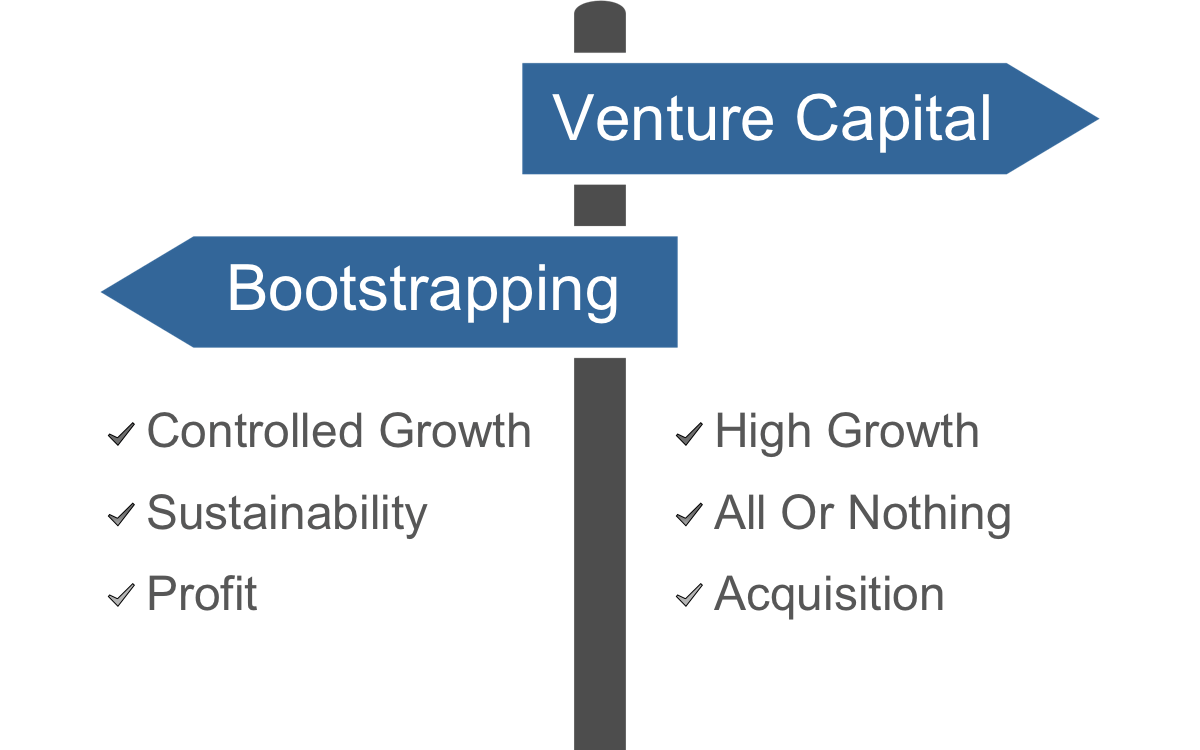
Focus on Paying Customers
Too many startups are trying to find the next fancy thing that could become insanely popular with huge masses. They are looking for a product that would appeal to millions of users. But when asked to pay for these products or services they realize that out of those millions, only a few are interested enough to buy.
If you have a million users who wouldn’t pay, every user becomes your expense – you have to give them support, communication, time, infrastructure, and so on. Instead, start with a "good enough" minimum viable product your customers are willing to pay for.
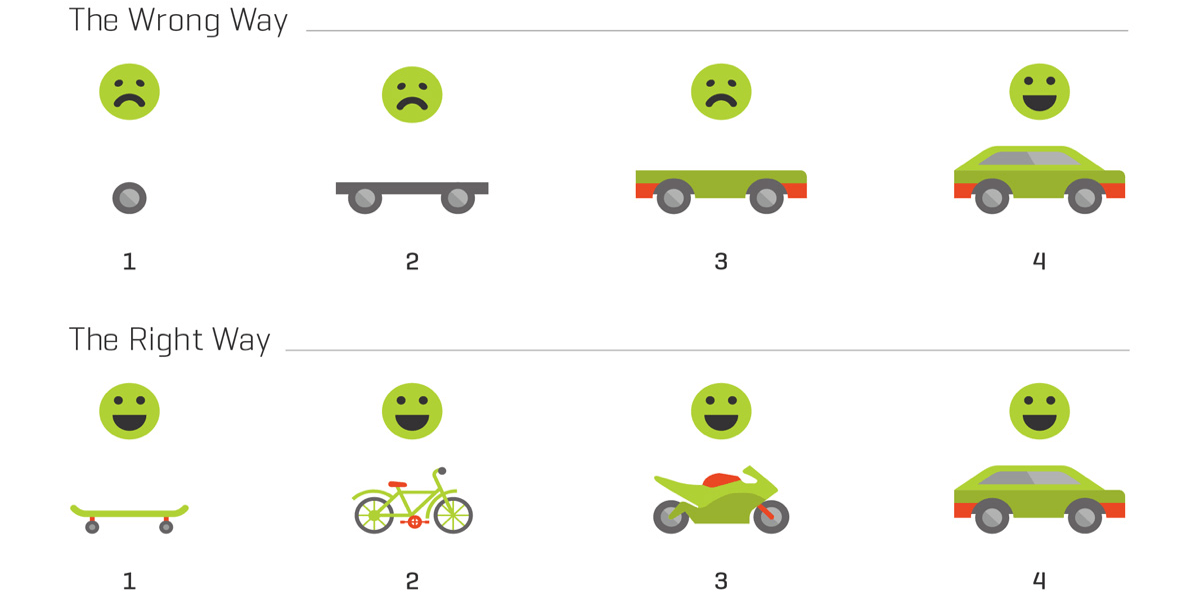
- Find a product or a service your customers will buy. Don’t fall into the trap of believing your prospects when they say, “If only you had/could __ __ __, then I would definitely buy.” They have to take out their wallets and actually pay for your product or service as it is.
- Focus on the needs and requirements of your first real customers. If you try to improve your product for your existing customers, you’ll find even more new customers just like existing ones.
- Grow with your customers. When your customer base grows, you can linearly grow your team and business, maintaining a balance and keeping steady control.
- Ask for a fair price. Your income from one customer should start from tens-of-dollars per month or hundreds per year for a product or service package. These are the starting points where you can start making some business from customers.
If you ask for just a couple of dollars, then every time a customer contacts you, you’re already making losses. You have to charge a reasonable price for your product or service to be able to provide high quality. eazyBI pricing is focused on paying business customers. Our prices are clear, simple, and reasonable. We don’t use any annoying psychological tricks to make the prices appear lower – for example, $97 instead of $100.
Provide the Best Quality Support
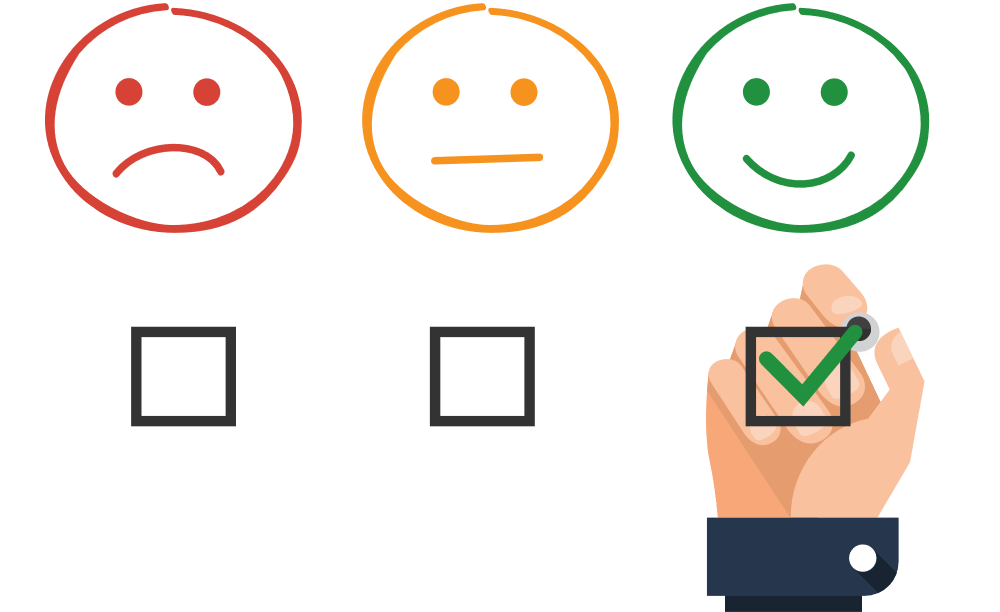
When customers are looking for a solution to their problem, they will often check what other users are saying about you. They want to know whether or not they will get a decent support when needed. Providing an excellent support has many benefits:
- A great support can be your best competitive advantage. If you are in a good niche, especially in a B2B industry, it is likely that there will be many other similar tools and competitive services. Providing a great support is your opportunity to stand out.
- More reviews. A good support is one of the best ways to earn good ratings, reviews, feedback, and testimonials. The best time to ask is at the moment when they are most satisfied with your product or service, or when you have just provided good quality support.
- Understand your market. Talking to your customers and helping them solve their issues is the best way to learn more about them and to .
- Develop new features. Observing how your customers are using your tool will give you ideas on how to improve it. They will tell you about any functions and features that your product is missing.
In eazyBI, we have an “all hands on support” policy. I myself, our marketing and support team, and even our developers are involved in customer support. Every two weeks we rotate our developers, and one of them becomes a full-time support member.
When our customers ask for a function or feature that we do not provide, we often realize that there is a work-around. This thought process leads to much better ideas and helps us develop new useful features, which eventually benefit all customers.
Find Beneficial Partnership
It is hard to do business alone these days. Although the Internet enables you to reach your prospects worldwide, it also enables your competitors – they are just one click away. It’s important to find partners and distribution channels to distribute your products directly and more efficiently.
Initially, I built integrations with several popular applications like Zendesk, Basecamp, Highrise, Harvest, Git, Jira, Twitter, and others. For eazyBI, the most successful channel turned out to be Atlassian Marketplace, thanks to our Jira add-on. For the past couple of years, eazyBI has been listed steadily among the top 10 add-ons for Atlassian Jira on Atlassian Marketplace.
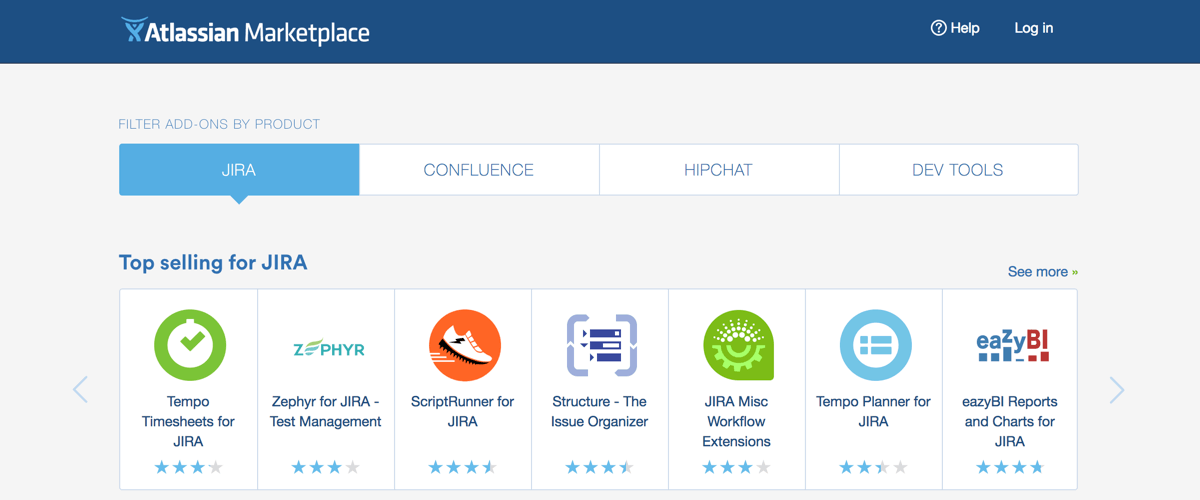
Atlassian has many partners, including solution experts who consult and implement Atlassian products and add-ons for their customers. Instead of competing with other Atlassian partners, we partner up with them. We focus more on product development and primary support, giving our partners the opportunity to provide deep and personal support, and improve their consulting business. This model benefits all parties:
- us, because we can focus our resources on development;
- our partners, because it provides them with new customers and additional business; and
- our customers, because they have a wide network of qualified experts all over the world who can give them the time, attention, and support they need. Being a small team, we wouldn’t be able to do that alone.
When working with partners, it’s important to remember that you still have to do the selling. Do not expect that if you have a great product, your partners will take care of the whole sales process. They can provide a distribution channel, they can help you getting new prospects and trials, but you need to convert those prospects into customers yourself.
Meet Your Customers
A common mistake for startups is to spend a lot of time going to startup conferences and seminars, hoping for a breakthrough secret. Instead, they should go to business and user conferences where their prospects are most likely to be.
In eazyBI, we travel to many business conferences each year to meet our customers and prospects personally. We talk to them, and show them our product and solutions.
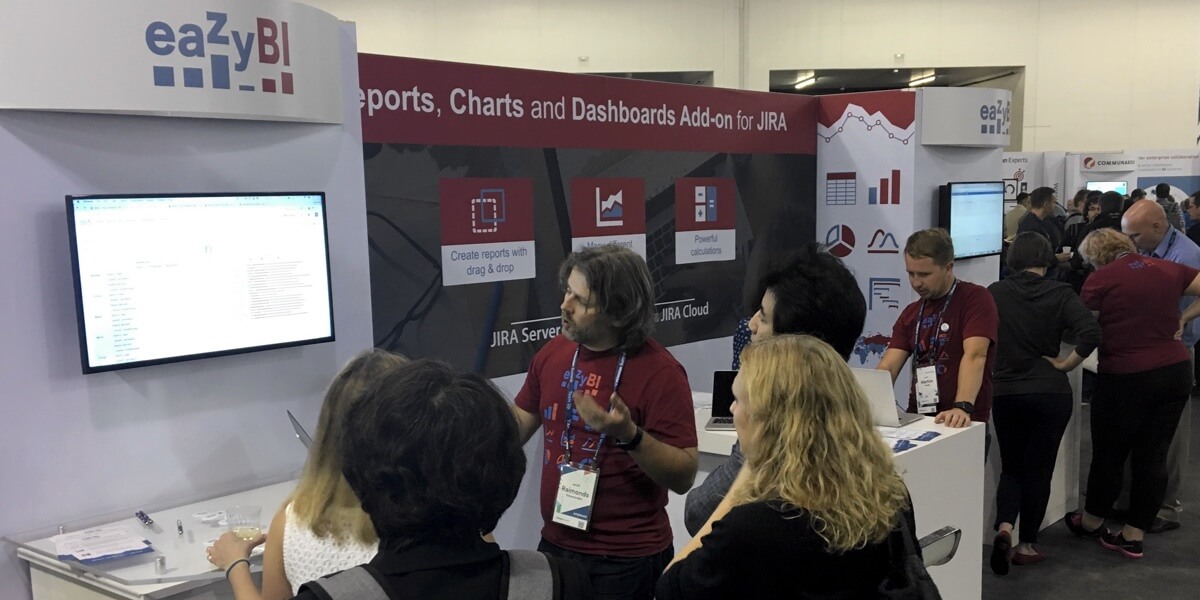
Most of the time, the return on investment from direct leads or customers acquired at a conference does not cover the immediate expenses. But, our presence builds our brand and a momentum that converts into growth and sales in the long term.
One of the biggest benefits from these conferences is the ability to build relationships with our partners and to expand our partner network and distribution channels.
Control Expenses
In the beginning, your success often depends on how long you can survive with little- to no-income. That, in turn, depends on your savings and your burn rate – the amount of money you, as a company, are either spending (gross) or losing (net) per month. It is important to keep your burn rate as low as possible. It could mean you have to go with no office, no team, no excessive equipment, and no loans.
Small Team
The first few years, I was working alone from my home. I knew how to handle the product development and the management side of my business because I had a great experience in both of these areas. I hired my first developer only when I already had customers and a positive cash flow to cover my expenses. Sometimes it’s a good idea to have a team of two, where one covers the business side and the other the technology side of the business.
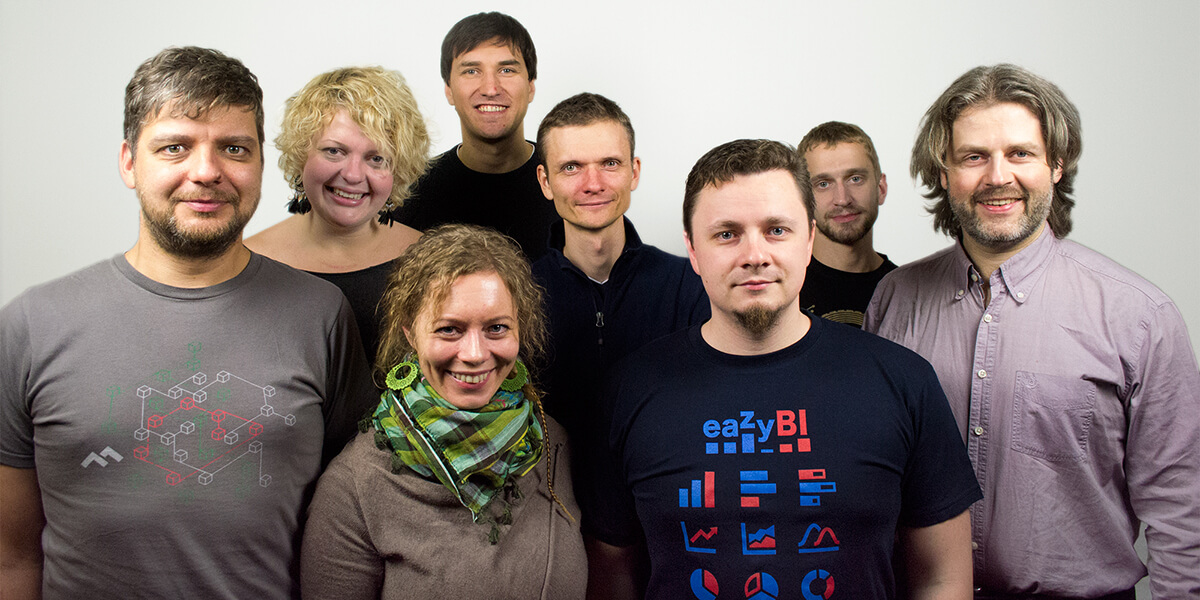
Over the past three years, our team has more than doubled. We have a small controlled growth and we add new team members only when it’s really necessary. We always try to find a member who is a good fit for the company and our culture.
Remote Work – No Office
In my previous work, I was tired of spending hours in traffic jams each day. I decided that I could spend that time more effectively if I didn’t have to go to an office every day. Later, when new team members joined, we decided to continue working remotely.
If our market is global, why should we have one small office in one particular place anyway? We can work equally well or even better from any place with an Internet connection. We have a 4G broadband Internet available anywhere in Latvia, so we can work wherever we want.
We still don’t have a central office and I still work from home.
We have “home offices” all over Latvia. In the summer, some of our employees go to their rural premises and spend their summer outside the city.
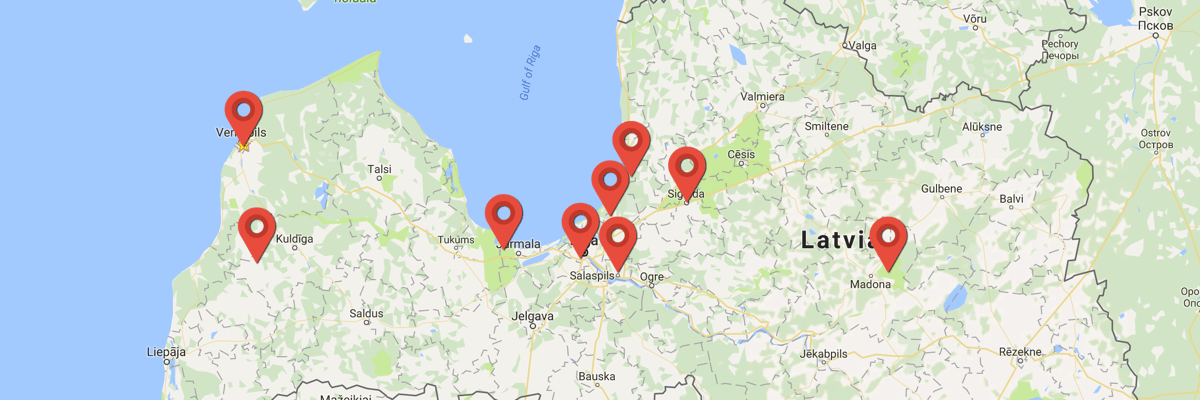
If you are working fully remotely, you’re also more flexible with employees. You are not limited to a certain area around your office. There are people with families and family houses outside the capital, and they also prefer this remote style of working. This is a positive differentiator compared to many other companies.
Reasonable Marketing Expenses
The “if you build it, they will come” mindset is broken. Your prospects don’t even know you and your solution exists until you tell them. When you are starting out, you don’t have a budget for expensive marketing campaigns. In fact, you shouldn’t burn all your budget in marketing while you still don’t know who and where your prospects are and how to reach them.
Marketing is fishing – you need to find the right place, the right hook, and the right bait to catch your desired fish. And you have to do all of that blindfolded. Throwing a load of worms in the middle of a pond won’t help you to catch a whale.
When looking for prospects, I mostly looked for different user forums and discussion groups. I tried to find somebody with a problem where I could give a real solution, using my product for an example. When considering apps to integrate with, I was checking their user forums to see whether users are asking for custom reports and charts, implying that the built-in functionality was insufficient.
Our first customers came mostly from application websites where we had integration and were listed as an external analytics solution for their application. Many users came from user forums. This helped us building the authority and links to our website, essentially improving our rankings in search engines.
Many years later we still benefit from organic search engine traffic. We still don’t need paid traffic sources because we are satisfied with our growth rate so far.

